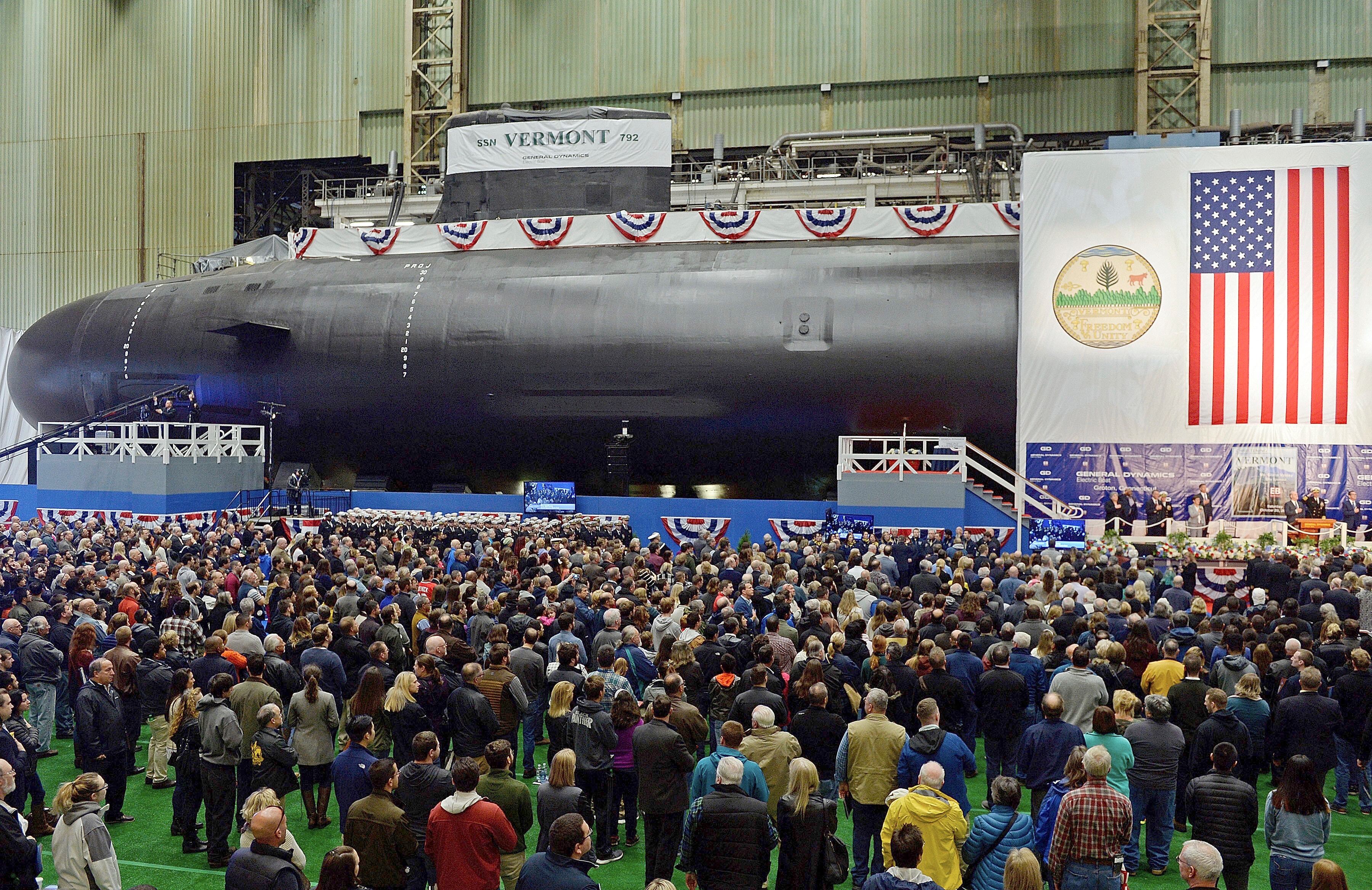The Navy says it has worked to ensure submarine safety following revelations late last year that a Washington state metallurgist spent decades faking the strength tests results for steel used to make subs.
But Naval Sea Systems Command, or NAVSEA, has declined to provide specifics on which submarines were built with the affected steel and what steps have been taken to ensure the safety of American boats.
NAVSEA spokesman Alan Baribeau said that “a thorough analysis” of castings and other measures have ensured “safe operation of the affected vessels.”
“The Navy conducted a thorough analysis of the castings and took steps to ensure safe operation of the affected vessels,” Baribeau said in an email. “There are no operational impacts to submarines and we have addressed impacts for new construction vessels. High quality standards for components are an integral part of the Navy’s effort to ensure the safety of our sailors.”
Elaine Marie Thomas pleaded guilty in November to faking the strength tests from 1985 to 2017 on at least 240 steel productions, about half the steel the Tacoma-based foundry produced for the Navy, the Associated Press reported that month.
RELATED

Such tests are meant to show the steel wouldn’t fail in a wartime scenario or in a collision.
Thomas, who was 67 at the time of her guilty plea, was the director of metallurgy at the foundry, which supplied steel castings used by Electric Boat and Newport News Shipbuilding to make sub hulls, the AP reported.
“Yeah, that looks bad,” Thomas reportedly said when confronted with the doctored results, according to the AP.
Following the revelations involving the faked steel strength tests, subject matter experts with NAVSEA and “associated Warfare Centers” oversaw an analysis of the steel, Baribeau told Navy Times.
Officials said at the time of Thomas’s guilty plea that the Navy had incurred extra maintenance and costs to ensure the subs were seaworthy.
“The Navy will aggressively investigate and pursue all possible recoveries from suppliers who do not meet standards,” Baribeau said.
Thomas is scheduled to be sentenced next month and faces up to a decade in prison and a $1 million fine, but the AP reported in November that the U.S. Justice Department plans to recommend a prison stint at the lower end of the sentencing range.
Her actions came to light in 2017 after another metallurgist noticed suspicious test results and alerted their company, Bradken Inc., according to the AP.
The company fired Thomas and reported its findings to the Navy, but then suggested that the test discrepancies were not due to fraud, which prosecutors said hindered the Navy’s investigation into the scope of the problem and efforts to remediate risk to sailors, the AP reported in November.
The company agreed to pay $10.9 million in June 2020 under a deferred-prosecution agreement, according to the AP.
When confronted by investigators, Thomas suggested that she changed the tests to passing grades in some cases because she thought it was “stupid” that the Navy required the tests to be conducted at negative-100 degrees Fahrenheit, the AP reported.
“Ms. Thomas never intended to compromise the integrity of any material and is gratified that the government’s testing does not suggest that the structural integrity of any submarine was in fact compromised,” her attorney, John Carpenter, wrote in a statement filed in the court on her behalf, according to the AP.
“She regrets that she failed to follow her moral compass,” the statement continues. “Admitting to false statements is hardly how she envisioned living out her retirement years.”
Geoff is the managing editor of Military Times, but he still loves writing stories. He covered Iraq and Afghanistan extensively and was a reporter at the Chicago Tribune. He welcomes any and all kinds of tips at geoffz@militarytimes.com.




